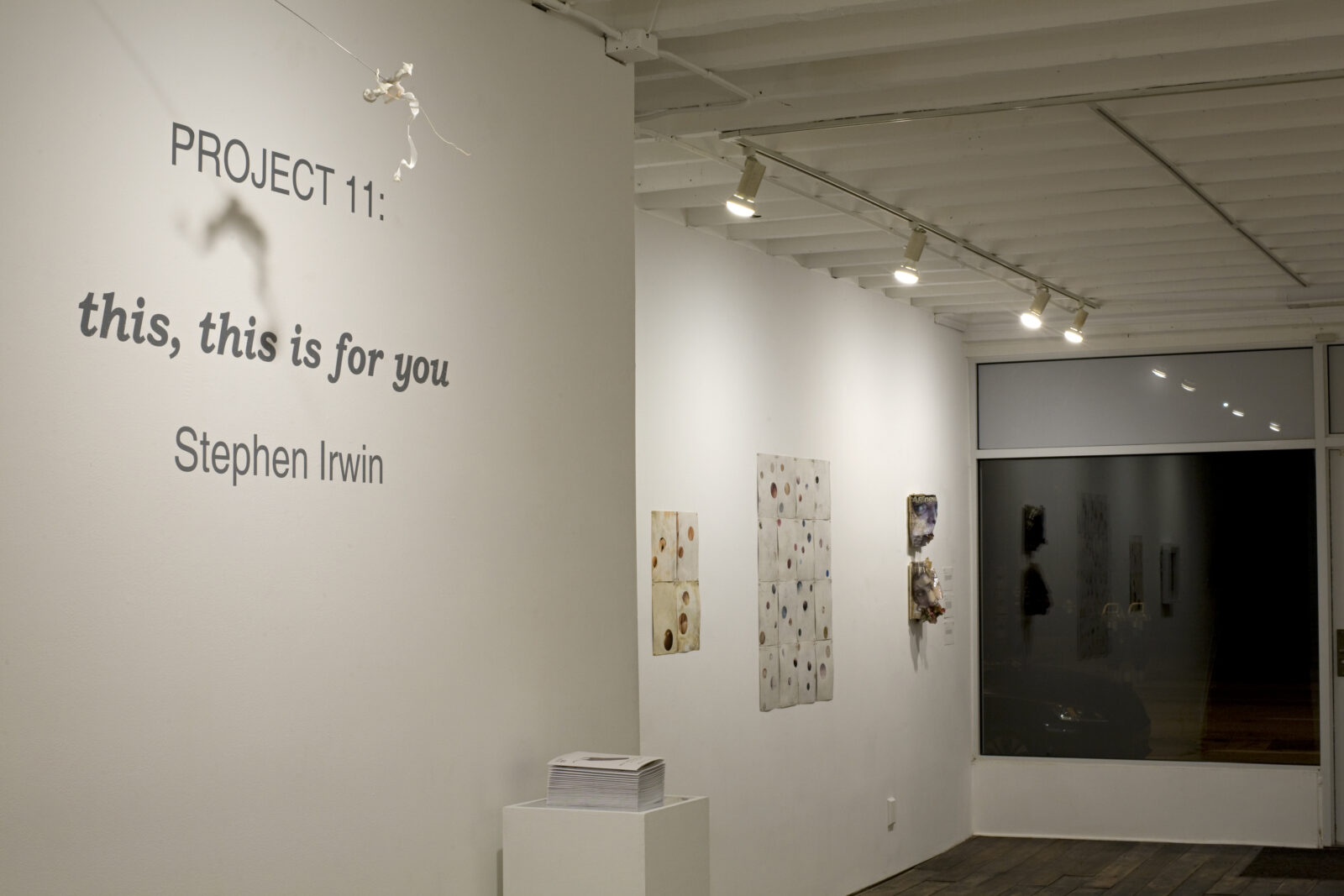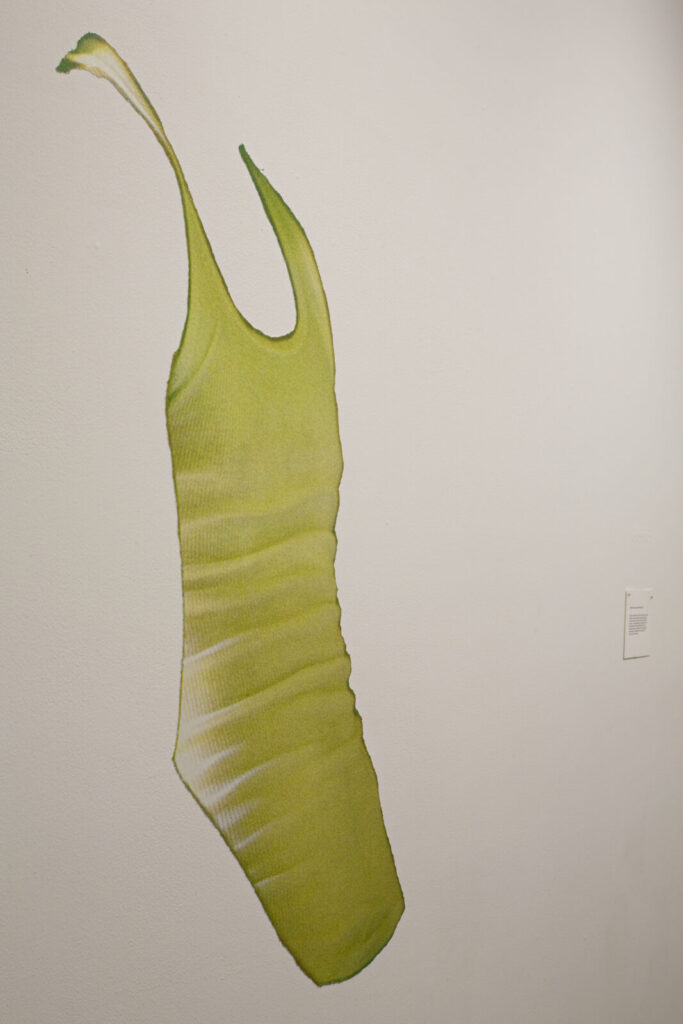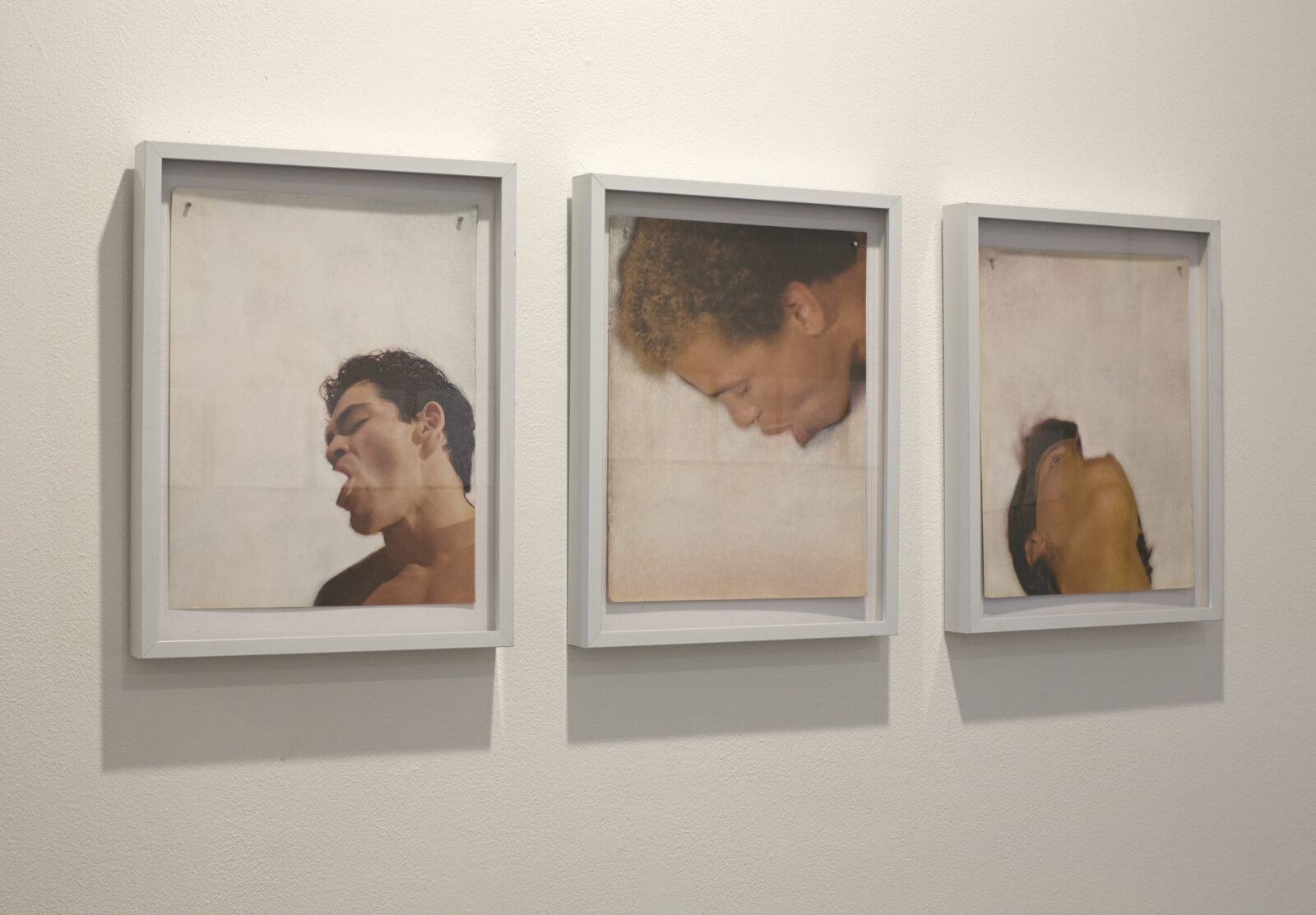Stephen Irwin spent most of his life making impressions—ask those who frequented Sparks, the now defunct Louisville nightclub that Irwin co-owned in the early 1990s. According to a September 2008 feature in Butt Magazine, Irwin was something of an enigma: “…modern artist, local celebrity, trash, heart-attack survivor, pacemaker carrier, bitch, and a confidante to Louisville’s ladies of good taste.”[1] While Irwin’s personality seems to have left lasting imprints in the minds of others, his artistic practice was rooted in erasure. Irwin produced a large portion of his oeuvre through cutting-out, rubbing-off, or whiting-out body parts from vintage gay pornography magazines. Through obscuring parts of—or entire—ready-made erotic images, Irwin rendered them even more seductive, inviting viewers to question preconceived concepts of pleasure, desire, and pornography. Zephyr Gallery’s current exhibition, Project 11: this, this is for you, considers the conceptual and aesthetic legacies of the late Louisville-based artist and helps understand his reductive practice.
Project 11 uses Irwin’s process as axis; the selected works revolve around the nexus of erasure, sensuality, and playful seduction. His altered images often elude classification—one could even argue they fall somewhere on the Dada spectrum through their reliance on the readymade. Zephyr’s curatorial team selected works that date between 2003 and 2010, encompassing Irwin’s late career. While the exhibition is largely comprised of his two-dimensional images, the inclusion of the artist’s braille installations—in addition to the ethereal Vessel Series (2008)—provide additional layers of physical temptation.
Lurking on the back wall—and directly across from Zephyr’s front door—is Irwin’s The Unbearable Whiteness of Being (Wifebeater) (2006). Like the majority of Irwin’s altered pornography works, only select body parts survive the Wite-Out process. In Unbearable Whiteness, a green tank top was enlarged and printed on vinyl wallpaper. Although seamlessly adhered to the gallery’s flat wall, the image’s small folds and creases provide the illusion of bodily presence and movement. Irwin has erased the sex act, but teases viewers with its remnants—a phallic torso that both welcomes and resists an eroticized reading.
Unbearable Whiteness acts as mediator between two of Irwin’s magazine series; to the left—and exhibited for the first time—is Love Parade (2006-2007), a succession of book pages whose figures have been completely coated in Wite-Out. Love Parade was an electronic dance music festival in Berlin that hosted thousands of partiers from across the globe, and often provided a convergence point for those on society’s margins. Irwin took its catalog as muse, covering the photographs of Love Parade’s participants while leaving their corresponding quotes untouched. The right wall houses his Circle Game series (2009)—individual magazine sheets installed in constructed grids whose contents have been etched away by the steel wool’s coarse tentacles. All that remains are floating peepholes through which arms, faces, buttocks, testicles, and oiled nipples are barely recognizable. These seductive skin-toned bubbles magnify and tenderize their respective body parts, reducing the pornographic image to pure texture. Zephyr’s first floor also displays Irwin’s “melting” magazines and suspended Skrinky-Dink faces, in addition to a two unique works-on-paper in the back gallery reception area.
Project 11 provides rare access to some of Irwin’s ethereal installations, each carefully reconstituted for Zephyr’s second floor. Vessel Series invites viewers to mentally re-construct the magazines’ naked bodies, as their silhouettes have been abstracted to create wall drawings of inanimate objects. Irwin selected cutouts from vintage pornography magazines, and used steel wool to rub the magazine’s ink directly onto a wall. He would then flip the same cutout over and repeat his process, eroding the magazine cutout while completing the second-half of his wall vessel. Because of the vessels’ curvatures, it seems impossible to decipher who is doing what to whom, or to themselves. You Are Loved (2009) and You Already Know How This Will End (2010) contribute an additional layer of resonance to Project 11, as they are braille wall installations made from steel-wool shavings and embedded magnets. Temptation abounds: any attempt to physically read their messages would immediately result in their destruction.
One of Irwin’s works is only visible after-hours, and like Irwin’s erasures, it reduces a form to what he considered “essential.” this, this is for you (2008) appears at night—its soft, ghost-like silhouette begins to take shape on the gallery wall at dusk. The effect is created through clear vinyl lettering placed on Zephyr’s front window, and is relatively invisible during the daytime unless one makes a conscious effort to locate its faint outlines.
What renders Project 11 particularly meaningful and successful is its careful consideration of Irwin’s works. Pornography—as it stands in our current sociopolitical climate—is often wrongly associated with shame or crudeness. In a previous exhibition catalog of Irwin’s work, Gérard Goodrow misinterprets the artist’s reductive practice as an attempt to free “the depiction of nudity in art from the clutches of pornography.”[2] This reading dismisses pornography as “less than,” conflating sex and pleasure with heteronormative, conservative, or religious standards. Through the lens of Jonathan Katz’s “Art and the Sexual Revolution,” we can consider Irwin’s works as not a separation of nudity from pornography, but a solvent for “physical and social differences.”[3] The artist’s choice of material—1960s and 70s pornography—is a return to the 1960s climate of sexual freedom, when “…art offered simultaneously an intensification of, and suspension from, real life and the often-invisible social forces that govern our lives.”[4] Project 11 presents Irwin’s works in the context of his process and material, allowing seduction and pleasure to traverse time and culture.
Project 11: this, this is for you runs through through March 19th.
[1] See Vince Aletti, “Foreword,” in Stephen Irwin, exh. cat. (New York: Invisible Exports and r/e projects, 2014), 5. Stephen’s feature appears in Butt Magazine, 24 (September 2008).
[2] Gérard A. Goodrow, “Replacing Obscenity with Obscurity: Stephen Irwin’s Vintage Pornography,” 27.
[3] Jonathan D. Katz, “Art and the Sexual Revolution,” in Sexuality, ed. Amelia Jones (Cambridge: MIT, 2014), 65
[4] Katz, “Art and the Sexual Revolution,” 63







